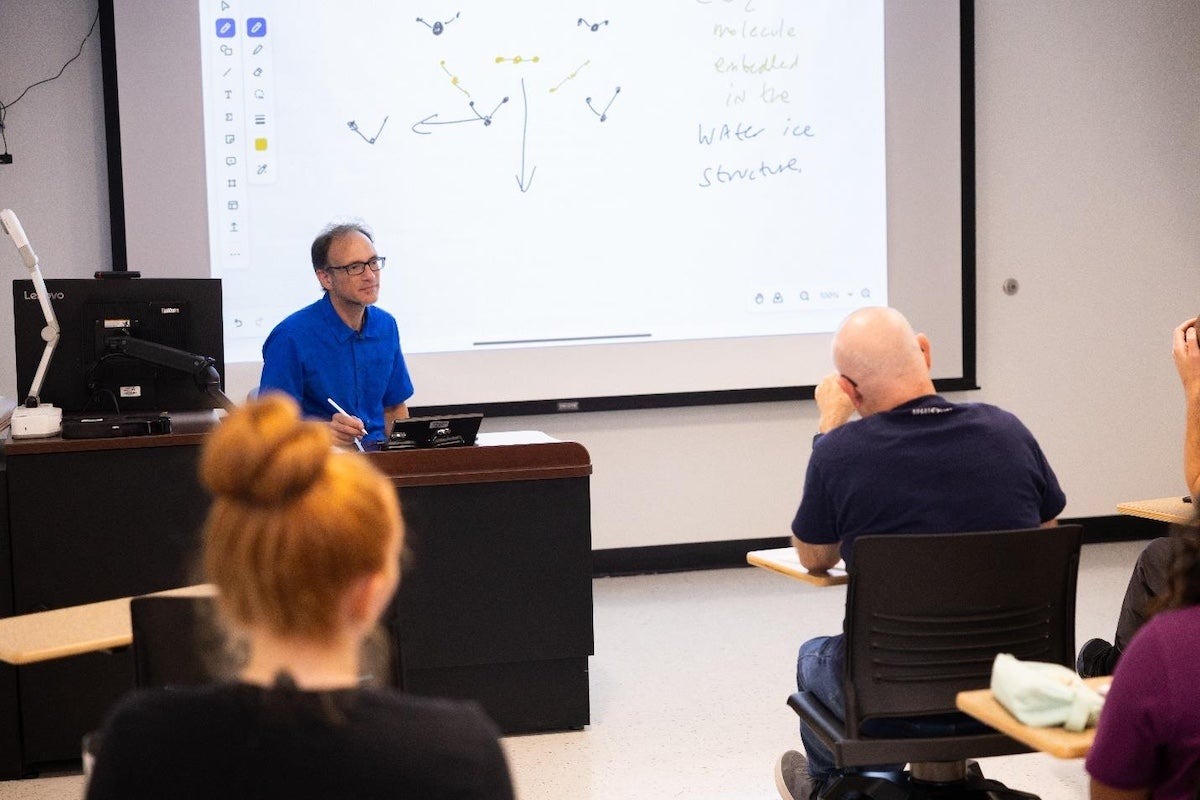Researchers Develop Method to Hide Images and Information in Plain Sight
W
“We found we can create a surface where we preferentially control absorption of light,” says Debashis Chanda, an associate professor of physics, optics and nanoscience who has developed the technique.
The findings were published recently in the Nature journal Light: Science & Applications.
The trick is to put the information on a surface that is riddled with nanoscale patterns, which can fool the naked eye by reflecting only a solid color rather than the intended information. To get the intended information, a person must look through an infrared lens or camera tuned to the correct infrared band.
And not only can information be hidden this way
The applications for this technology could include anticounterfeiting security, infrared tagging or infrared camouflages where, for instance, the presence of a designer label could be confirmed with a look through an infrared camera. It also has military applications, such as confirming which assets are friendly and which are enemy by tags on their surfaces that are only visible in a specific infrared band or by dynamically changing the information for infrared camouflage.
In the Light: Science & Applications study, the researchers demonstrated that they can hide images within the infrared spectrum while the same area appears as a solid color in the visible spectrum.
To do so, they created a three-level, layered, “plasmonic” system that sandwiches a polymer layer imprinted with nanoscale holes, between a gold mirror at the bottom and a gold layer at the top with holes that match the polymer layer.
Images can be imprinted on top of the “plasmonic sandwich,” and aspects of the holes, such as size and depth, help dictate which infrared band the image can be seen in. Without looking through an infrared camera tuned to the right band, the top of the device looks like a solid color, such as a yellow square, thanks to the unique properties that can be achieved with materials at the nanoscale.
Varying the pattern characteristics allows the researchers to control the electron plasma resonance, or the electric energy, created when the light hits the device.
“So by controlling this electron plasma resonance we can actually control which color of light or which band of light is absorbed and reflected,” Chanda says.
In the ACS Photonics study, the researchers went a step further and developed a way to erase and display the image in selected infrared bands.
They did this by adding a layer of phase change material vanadium dioxide within the “plasmonic sandwich” that dynamically changes the light reflection from the surface from 100 to 0 percent and back as the phase change is triggered.
“It provides an additional element of dynamic tunability where the coded information is concealed or revealed to infrared cameras,” Chanda says.
Co-authors of the Light: Science & Applications study were Daniel Franklin ’18PhD, now a postdoctoral fellow at Northwestern University; Sushrut Modak ’14MS ’18PhD, who recently graduated from UCF’s physics doctoral program; Abraham Vázquez-Guardado ’16MS ’18PhD, a postdoctoral fellow in UCF’s Nano-Optics Group; and Alireza Safaei ’18MS, a physics PhD. student.
Co-authors of the ACS Photonics study were Sayan Chandra, a postdoctoral fellow in UCF’s Nano-Optics Group; Daniel Franklin; Jared Cozart, an undergraduate honors student majoring in photonics; and Alireza Safaei ’18, a PhD physics student.
The research was funded by the National Science Foundation and Northrop Grumman Mission Systems’ University Research Program.
Chanda received his PhD in photonics from the University of Toronto and worked as a postdoctoral fellow at the University of Illinois at Urbana-Champaign. He joined UCF in 2012.
Share This Article

UCF Women’s Club Honors 3 Graduate Students with Prestigious Sheila B. Somerville Scholarship
Financial support is often the cornerstone of academic success, and for many students, scholarships open the door to higher education. Beyond easing financial stress, these awards provide recognition, motivation, and a...
Latest News

UCF Launches 1st Planetary and Space Sciences PhD Program in Florida
As SpaceU, UCF is pushing the boundaries of exploration by launching a groundbreaking new doctoral program in the planetary and space sciences. Now, aspiring researchers can apply to the inaugural cohort of...

UCF Fulbright Awardees Bring Their Passions to a Global Scale
Each year, the Fulbright Program offers opportunities for American students to conduct research, teach English, or pursue graduate study abroad. One of the most prestigious international exchange programs in the...

Unleash Opportunities with a UCF Graduate Degree
A graduate degree has the power to unleash opportunities by expanding careers, opening doors to new fields, and increasing lifetime earnings. According to the U.S. Bureau of Labor Statistics (2024),...

UCF Rosen College Ranks No. 1 in the World for Hospitality Education for 2025
One of the most anticipated theme parks in the world is about to open its gates — and right next door, the No. 1 hospitality and hotel management school on...